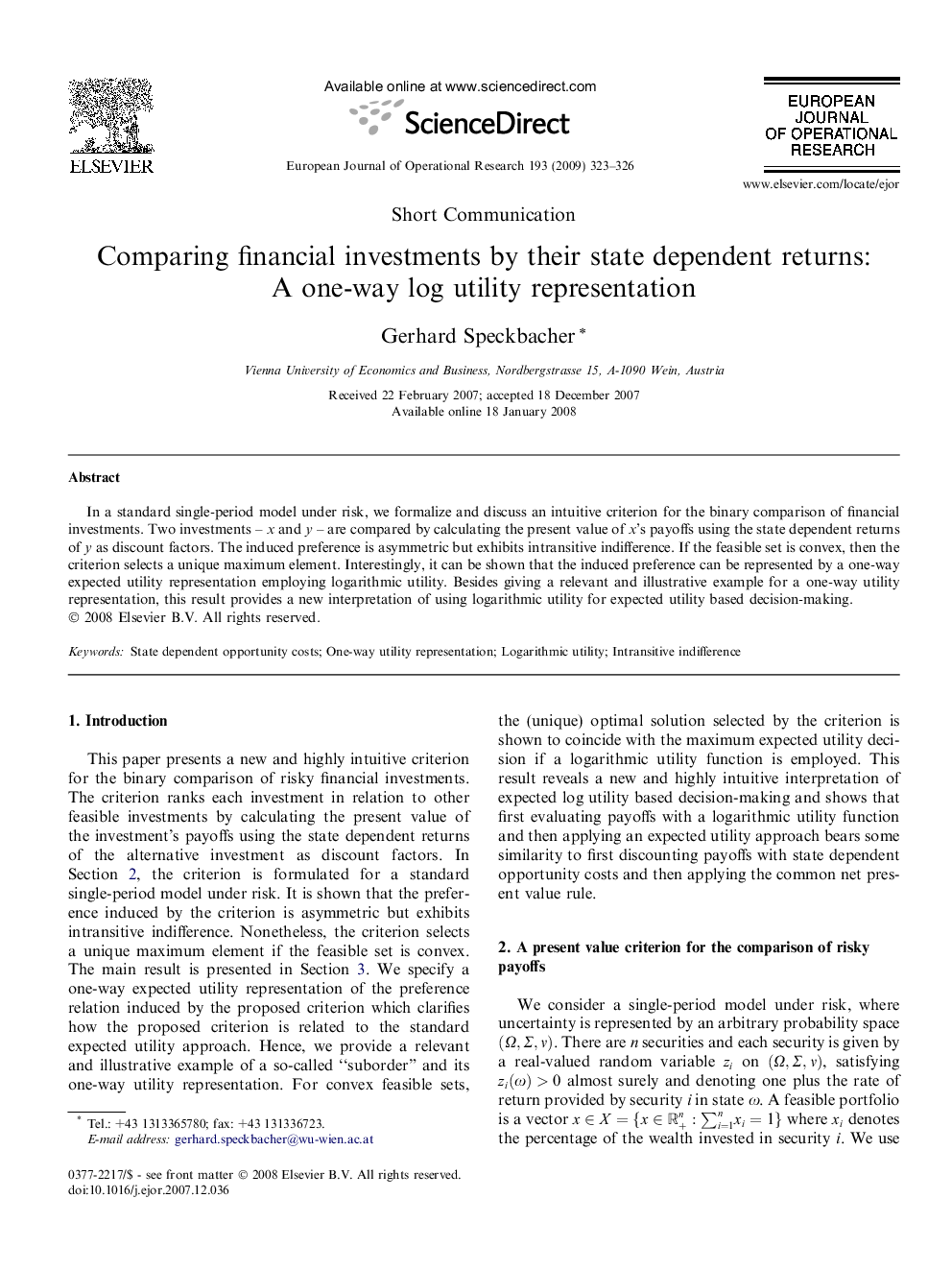| Article ID | Journal | Published Year | Pages | File Type |
|---|---|---|---|---|
| 481758 | European Journal of Operational Research | 2009 | 4 Pages |
In a standard single-period model under risk, we formalize and discuss an intuitive criterion for the binary comparison of financial investments. Two investments – x and y – are compared by calculating the present value of x’s payoffs using the state dependent returns of y as discount factors. The induced preference is asymmetric but exhibits intransitive indifference. If the feasible set is convex, then the criterion selects a unique maximum element. Interestingly, it can be shown that the induced preference can be represented by a one-way expected utility representation employing logarithmic utility. Besides giving a relevant and illustrative example for a one-way utility representation, this result provides a new interpretation of using logarithmic utility for expected utility based decision-making.
